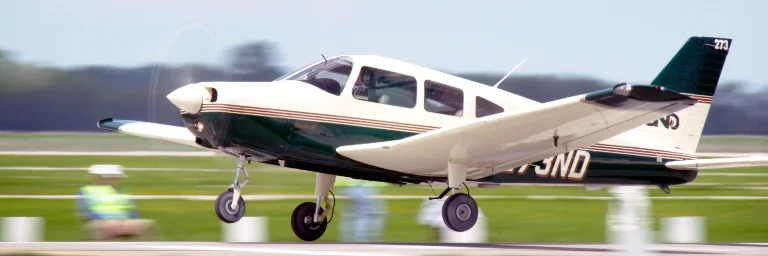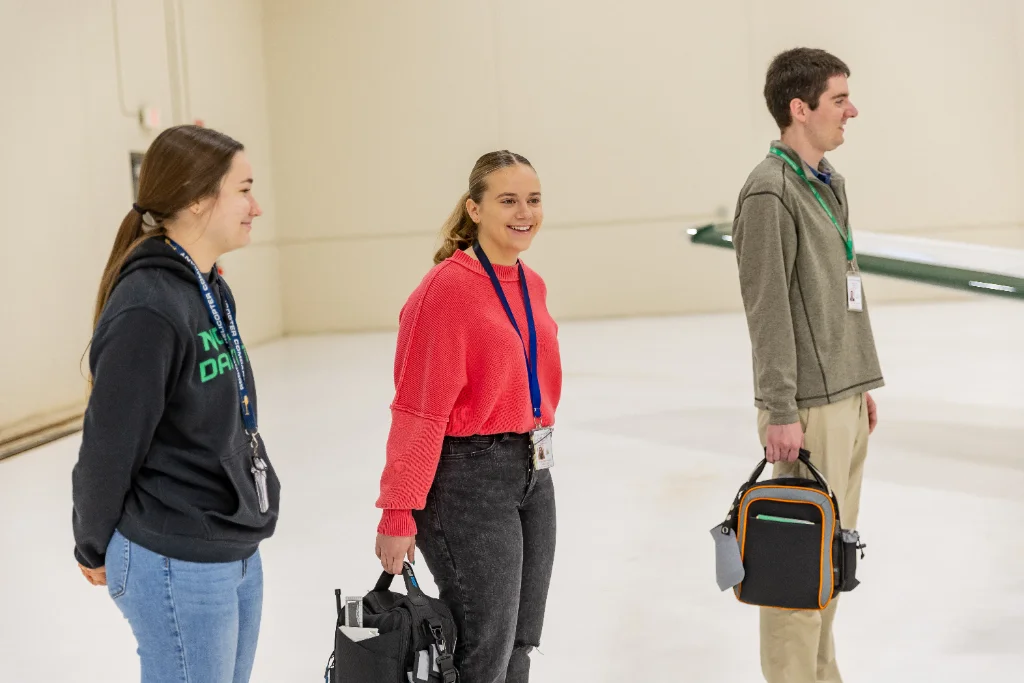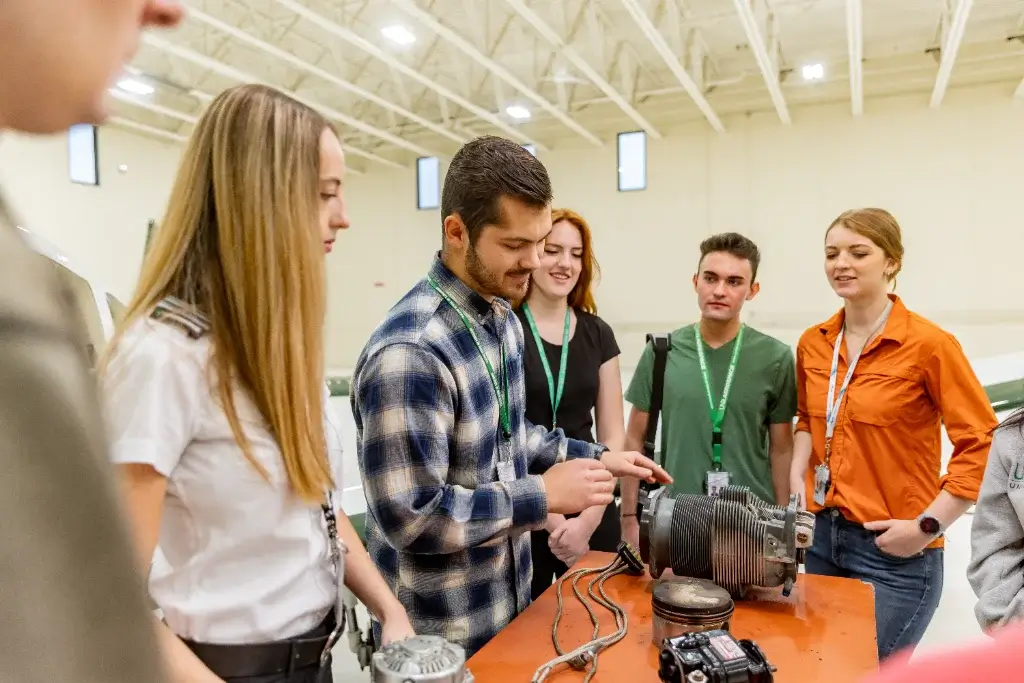
How Long Does It Take to Become an Aerospace Engineer?
From the development of commercial airliners that carry millions of passengers annually to cutting-edge spacecraft exploring distant planets, these advancements showcase how far the aerospace engineering field has come.
Request Information
Yet, its origins were much humbler. Initially known as "aeronautical" engineering, it began with pioneers like Jules Henri, who flew the first steerable steam-powered airship in 1852. This marked the beginning of significant milestones, such as the creation of the "lighter than air" rigid airship in 1900.
It took millennia for humans to reach these early milestones and centuries more for aerospace engineering to evolve into the advanced field we know today. Although this historical progression spans a lengthy timeline, the journey to becoming an aerospace engineer is much shorter. So, how long does it take to become an aerospace engineer? Read on and find out as we calculate each step below.
What is Aerospace Engineering?
Aerospace engineering is the branch of engineering through which professionals design, develop, test, and produce aircraft and spacecraft. It encompasses a wide range of responsibilities, from building and testing aircraft and spacecraft to developing new technologies for aviation, defense systems, and space exploration. Aerospace engineers work to ensure that their designs meet rigorous safety and performance standards, often pushing the boundaries of technology to achieve greater efficiencies and capabilities.
Within aerospace engineering, there are several specialized subfields:
- Aerodynamics: This area focuses on how air interacts with moving objects like planes and spacecraft.
- Propulsion: Propulsion engineers develop engines and systems that generate thrust to propel aircraft and spacecraft.
- Structures: Engineers in this subfield design and construct the physical components, such as fuselages, wings, and other structural elements.
- Control systems: It involves designing systems that allow for the precise control of aircraft and spacecraft during flight.
- Spacecraft design: This subfield focuses on designing vehicles for space exploration and research.
How Long Does it Take to Get a Bachelor's Degree in Aerospace Engineering?
Earning a bachelor's degree in aerospace engineering takes around 4-5 years of full-time study. However, this duration can vary based on several factors. For instance, students who enroll part-time may take 6-8 years to complete their degree due to a lighter course load each semester. On the other hand, accelerated programs are designed to be completed in about three years, often by taking courses year-round, including summer sessions.
The reason why it takes years to complete bachelor studies in this field, regardless of the program type, is because the core curriculum of an undergraduate aerospace engineering program covers an extensive range of essential subjects. Students can expect to take courses like:
- Materials Science
- Fluid Mechanics
- Machine Component Design and Laboratory
- Thermodynamics
- Engineering Design
- Mechanics of Flight
- Aerospace Structures
- Aerospace Propulsion
- Aerodynamics
Such courses are included to provide students with education in both the theoretical and practical aspects of aerospace engineering, thus preparing them for advanced studies and challenges they will encounter in their careers.
Admission to these aerospace engineering programs usually requires a high school diploma or equivalent, with a strong background in mathematics and science. Prerequisites often include advanced coursework in calculus, physics, and chemistry. Additionally, competitive programs may look for high standardized test scores, letters of recommendation, and extracurricular involvement in related fields.

Advanced Education and Specialization
After completing undergraduate studies, pursuing advanced degrees in aerospace engineering opens up even more opportunities for specialization, research, and higher-level positions within the field. These degrees typically include a master's degree and a Ph.D., each with specific durations, requirements, and focus areas.
A master's degree in aerospace engineering usually requires 1.5 to 2 years of full-time study, but, once again, the duration can vary depending on the program structure and the student's pace. Initially, students take advanced courses in specialized areas such as aerodynamics, propulsion, aerospace structures, control systems, and spacecraft design, which takes about one year. This phase involves both theoretical and practical components.
Following coursework, students engage in research or thesis work, typically lasting six months to one year. This involves identifying a research problem, conducting experiments or simulations, analyzing results, and writing a detailed thesis. Part-time students may take 3 to 4 years to complete the program, as they often take fewer courses per semester and may extend their research over a longer period.
A Ph.D. in aerospace engineering is a more extensive commitment, typically requiring 4 to 6 years of full-time study. The Ph.D. journey is divided into several stages. Initially, students take advanced courses to deepen their knowledge in specific areas of interest, lasting 1 to 2 years, followed by comprehensive exams to test their understanding of fundamental and advanced topics.
After completing coursework, students must develop a detailed research proposal outlining their intended research questions, methodology, and objectives. Passing the candidacy exam, which often involves defending the research proposal, is a critical milestone and usually takes six months to one year. The main work during Ph.D. studies involves conducting the research. This phase aims to contribute new knowledge to the field and culminates in the writing of a dissertation, typically taking two to four years.
Upon completion of the dissertation, students must defend their work before a committee of faculty members, which involves presenting their findings, answering questions, and demonstrating the significance of their research. On the other hand, part-time Ph.D. students may take 7 to 10 years in total to complete their degrees due to balancing other professional commitments.
Duration of Internship and Work Experience
Aerospace engineering internships or even entry-level jobs are essential for developing practical skills and establishing industry connections. They typically last eight to ten weeks, although the duration can vary depending on the season, industry, and employer. Therefore, you should conduct your job and internship search accordingly based on what works best for you.
Summer internships are common and usually span two to three months, aligning with academic breaks. Some internships, particularly those integrated into cooperative education (co-op) programs, may extend over several months or an entire semester, providing more in-depth experience.
Internships and entry-level roles allow students to blend their theoretical knowledge with real-world projects, work alongside experienced professionals, and gain exposure to the aerospace industry's daily operations. This hands-on experience is invaluable for building technical skills, understanding industry standards, and enhancing employability after graduation.
Duration of Professional Licensing and Certification
While optional for entry-level roles, licensure becomes necessary for those seeking higher-level positions and responsibilities.
The licensure process typically begins with earning an engineering bachelor's degree from an ABET-accredited program. After graduation, aspiring engineers must pass the Fundamentals of Engineering (FE) exam, a 110-question test that assesses basic engineering principles. Most candidates take this exam during their senior year or shortly after graduation. Following the FE exam, engineers are required to accumulate four years of professional engineering experience under the supervision of a licensed professional engineer.
After completing the requisite experience, candidates must pass the Principles and Practice of Engineering (PE) exam. This exam tests the ability to practice competently in a particular engineering discipline and typically requires extensive preparation, often taking several months to study. The entire licensure process, from beginning the bachelor's degree to obtaining the PE license, generally spans around eight to ten years.
Additionally, various certifications can enhance an aerospace engineer's credentials. The time required to earn these certifications varies but generally involves several months of study and examination.

Should I Pursue a Degree in Aerospace Engineering?
Whether or not to pursue an aerospace engineering degree is a personal decision that depends on you and your interests, strengths, and career goals. So, consider your passion for science, mathematics, and technology, as well as your desire to work on cutting-edge projects in the aviation and space industries.
Reflect on all this field has to offer, from the diverse career paths in aerospace engineering, which offer opportunities to innovate and contribute to significant advancements in aerospace technology, to the aerospace engineer salary, which averages $126,880 per year.
Evaluate your long-term goals and the dedication required to excel in this challenging yet rewarding field.
Conclusion
It can be intimidating to know that reaching the highest levels of aerospace engineering requires decades of dedication and effort. However, it's important to take it all one step at a time. Start with a bachelor's degree in aerospace engineering at UND, which can help you land entry-level jobs and provide a solid foundation for your career. From there, you can advance at your own pace, taking on new challenges and continuously growing your skills. This progression is standard across all careers; the key is to keep striving and evolving. So, embrace the journey, enjoy the learning process, and take pride in every milestone you achieve on your way to becoming an aerospace engineer.
FAQs
No, a graduate degree is not necessary to enter the field of aerospace engineering; many positions are available to those with just an undergraduate degree. However, a graduate degree can enhance career opportunities and specialization.
Career opportunities for aerospace engineers include roles such as Flight Test Engineer, Spacecraft Design Engineer, Aircraft Design Engineer, Structural Engineer, and Aviation Manager, among many others.
Yes, aerospace engineering is a promising career choice with a 6% estimated growth.